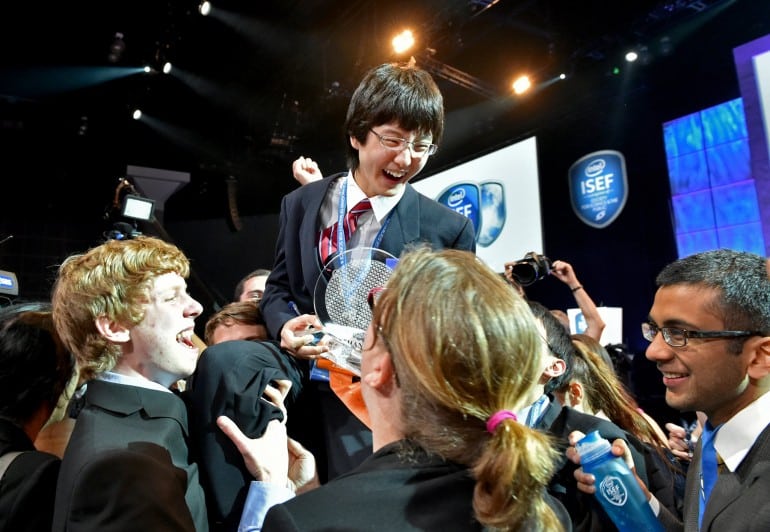According to Intel, International Science and Engineering Fair (ISEF) competition is the world’s largest high school science research competition. Each year, around 7 million high school students across the globe develop and submit original research for the ISEF competition, and very few gets selected as finalists. However, this year, Intel has awarded first prize to a 15-year-old student, Nathan Han, for making a software that studies the mutations of a gene linked to breast cancer.
Hans has developed a software that collects data from publicly available databases, examines characteristics across different mutations of BRCA1, a gene that helps to suppress tumors. In plain language, Han’s software can detect cancer-causing genes. For devising such a software, Intel has announced Han as the winner of the the Gordon E. Moore Award, and gave him $75,000, the first prize of Intel Foundation Young Scientist Awards.
It is to be noted that this year, more than 1,700 participants were selected to join “week-long celebration of science, technology, engineering, and math”. More than 500 finalists have been rewarded for their research, including 17 “Best of Category.” Each winner of this category has received US$5,000 as a prize money.
Besides, two students have received $50,000 each as Intel Foundation Young Scientist Awards. The two student are Lennart Kleinwort and Shannon Xinjing Lee. Lennart Kleinwort is 15 years old and from Germany, while Shannon Xinjing Lee is 17-year-old and from Singapore.
However, Lennart Kleinwort has been awarded for developing an app that lets users hand-draw curves, lines, and geometric figures and then render them “into shapes and equations that can then be manipulated at will.” On the other hand, Shannon Xinjing Lee has been awarded for developing an electrocatalyst made entirely from carbonized Chinese eggplant. It can outperform a more sophisticated commercial catalyst and can be used in the batteries of the future.
The contest was judged by more than 1,200 scientists. More than $5 million in prizes was awarded at this year’s contest.
Source: Intel
[ttjad keyword=”dslr-camera”]



